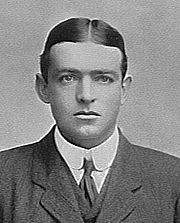An inspirational leader who refussed to leave anyone behind…
According to Wikipedia
Sir Ernest Henry Shackleton, was an Anglo-Irish explorer who participated in four British expeditions to the Antarctic, of which he led three.
After the race to the South Pole ended in December 1911 with Roald Amundsen’s conquest, Shackleton turned his attention to the crossing of Antarctica from sea to sea, via the pole. To this end he made preparations for what became the Imperial Trans-Antarctic Expedition, 1914–17. Disaster struck this expedition when its ship, Endurance, became trapped in pack ice and was slowly crushed before the shore parties could be landed. The crew escaped by camping on the sea ice until it disintegrated, then by launching the lifeboats to reach Elephant Island and ultimately the inhabited island of South Georgia, a stormy ocean voyage of 720 nautical miles. This exploit would assure Shackleton’s status as one of the principal figures of the Heroic Age of Antarctic Exploration.[1] In 1921, he returned to the Antarctic with the Shackleton-Rowett Expedition, but died of a heart attack while his ship was moored in South Georgia. At his wife’s request he was buried there.
Away from his expeditions, Shackleton’s life was generally restless and unfulfilled. In his search for rapid pathways to wealth and security, he launched business ventures which failed to prosper, and he died heavily in debt. Upon his death, he was lauded in the press, but was thereafter largely forgotten, while the heroic reputation of his rival Scott was sustained for many decades. Later in the 20th century, Shackleton was “rediscovered”,[2] and rapidly became a role model for leadership as one who, in extreme circumstances, kept his team together in a survival story described by polar historian Stephanie Barczewski as “incredible”.[3]
